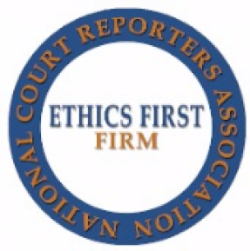Trial Presentation Tailored Solutions for Captivating Legal Presentations
Trial Presentation Tailored Solutions for Captivating Legal Presentations
Blog Article
Astound the Jury: Important Components of a Powerful Test Discussion
Necessary components such as recognizing the audience, crafting a compelling story, and grasping spoken and non-verbal interaction are crucial components of a reliable discussion. As these variables link, they create a natural approach that not just notifies yet also involves jurors on numerous degrees.

Comprehending Your Target Market
Comprehending your audience is a pivotal facet of efficient trial discussion. A successful discussion rests on the capacity to realize the demographics, values, and tendencies of jurors. This comprehension informs exactly how disagreements are framed, evidence is offered, and sob stories are crafted, guaranteeing that the message reverberates with the jurors on an individual level.
Research study indicates that jurors come from diverse backgrounds and might have differing degrees of understanding pertaining to legal process. Additionally, understanding the jurors' potential biases and life experiences allows the test speaker to expect objections and address worries proactively.
Effective trial presentation additionally entails observing jurors' reactions throughout the process. Being attuned to non-verbal signs can provide insight right into their engagement and understanding, permitting real-time modifications in strategy. Ultimately, an extensive understanding of the target market not just enhances communication however additionally constructs connection, boosting the likelihood of a desirable end result. Involving with jurors as people rather than a collective unit is essential in promoting a strong link in the courtroom.

Crafting a Compelling Story
Crafting an engaging story is essential in directing jurors with the complexities of a case. A well-structured narrative not only streamlines elaborate lawful ideas but additionally involves jurors on a psychological level, making the info more relatable and unforgettable.
To achieve this, lawyers ought to start by identifying the core message they want to communicate. This message should resonate with the jurors' worths and experiences, cultivating a link that transcends plain facts. The narrative needs to unfold practically, presenting occasions in a clear series to stay clear of confusion. This sequential method can assist jurors adhere to the progression of events, highlighting domino effect.
Including human elements-- such as personal stories or stories-- can further boost the narrative's effect. These components evoke compassion, allowing jurors to imagine the effects of the case on the real worlds. Furthermore, using a constant theme throughout the presentation reinforces the primary debate, making it simpler for jurors to preserve essential points.
Inevitably, a compelling story changes a test discussion from a simple recitation of truths into a convincing tale that mesmerizes the jury, urging them to ponder with both factor and feeling.
Making Use Of Aesthetic Aids
Integrating aesthetic aids into a trial presentation can significantly enhance jurors' comprehension and retention of info. Visual materials such as graphes, diagrams, photos, and have a peek at this site videos can transform complicated legal principles and proof into quickly digestible layouts. By engaging numerous detects, these help permit jurors to picture the case's crucial elements, making it less complicated for them to adhere to along and comprehend elaborate Look At This information.
Moreover, properly designed visual aids can highlight important points and highlight partnerships between various items of evidence. As an example, timelines can successfully highlight the sequence of occasions, while annotated images can make clear particular details relevant to the situation. This not just aids in understanding yet likewise reinforces the narrative offered by the lawyer.
Excessively complex or cluttered visuals may overwhelm jurors and detract from the message. Eventually, effective visual interaction can be a powerful tool in encouraging jurors and aiding them get to educated verdicts.
Grasping Verbal Interaction
Effective verbal communication is important in a test presentation, as it works as the primary methods where lawyers share their disagreements and link with jurors. Grasping this ability entails quality, persuasion, and interaction. Attorneys have to articulate their factors clearly and briefly, staying clear of legal lingo that may confuse jurors. Simpleness in language cultivates understanding and aids jurors grasp intricate issues provided during the test.
Additionally, tone and pacing dramatically impact just how messages are gotten. A certain tone conveys authority, while suitable pacing permits jurors to take in details without really feeling overwhelmed. Lawyers need to likewise differ their vocal inflections to highlight essential points and keep jurors' passion throughout the discussion.
In addition, the company of spoken disagreements is vital. Structuring the narrative rationally and coherently helps jurors adhere to the lawyer's logic, making it content less complicated for them to maintain essential details. Utilizing convincing techniques, such as storytelling, can likewise enhance the psychological resonance of the disagreements offered, therefore producing a much more profound link with jurors.
Inevitably, mastering verbal interaction not only enhances a lawyer's instance yet also cultivates depend on and connection with the jury, substantially boosting the opportunities of a favorable verdict.

Involving With Body Movement
Nonverbal interaction plays a vital role in trial discussions, usually sharing messages that words alone can not reveal. Body movement, encompassing gestures, stance, faces, and eye get in touch with, dramatically affects how jurors regard the trustworthiness and genuineness of the presenter. A certain stance, with shoulders back and an open stance, can instill count on, while closed-off body language might suggest defensiveness or unpredictability.

Face expressions should reflect the feelings connected with the situation, reinforcing the story existing. A genuine expression during an emotional moment can elicit compassion and reinforce the emotional allure. Eventually, mastering body language is necessary for reliable trial presentations, as it enhances spoken communication and establishes a compelling visibility that resonates with the court.
Verdict
Finally, captivating the jury demands a critical technique that includes understanding the audience, crafting an engaging story, utilizing visual help, understanding verbal interaction, and engaging via body movement. Each element plays a critical function in developing an effective test discussion that reverberates with jurors on both psychological and intellectual levels (trial presentation). By integrating these elements efficiently, attorneys can considerably enhance their ability to persuade and influence court decision-making
Report this page